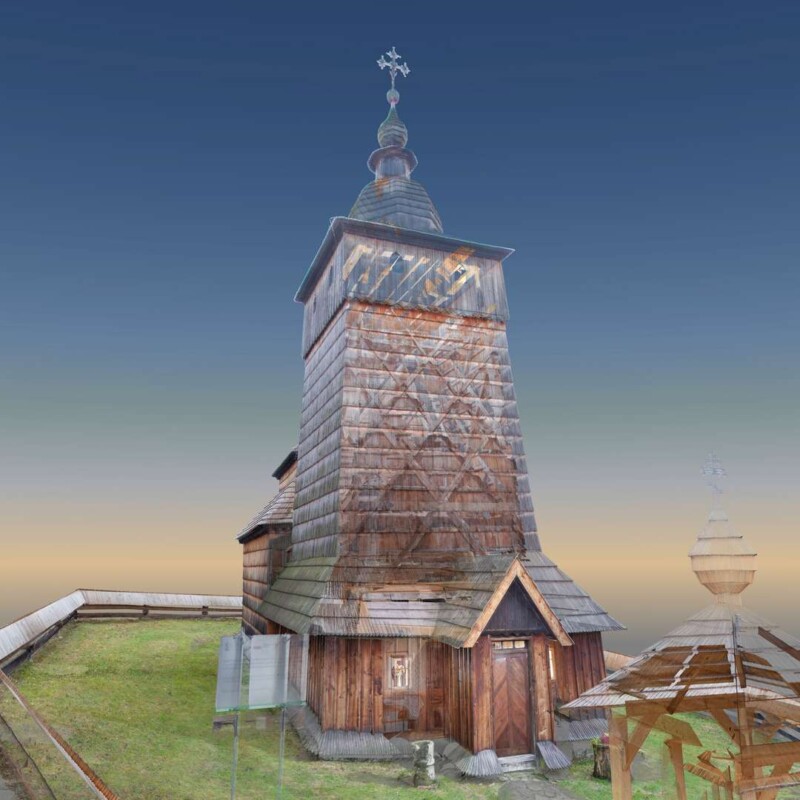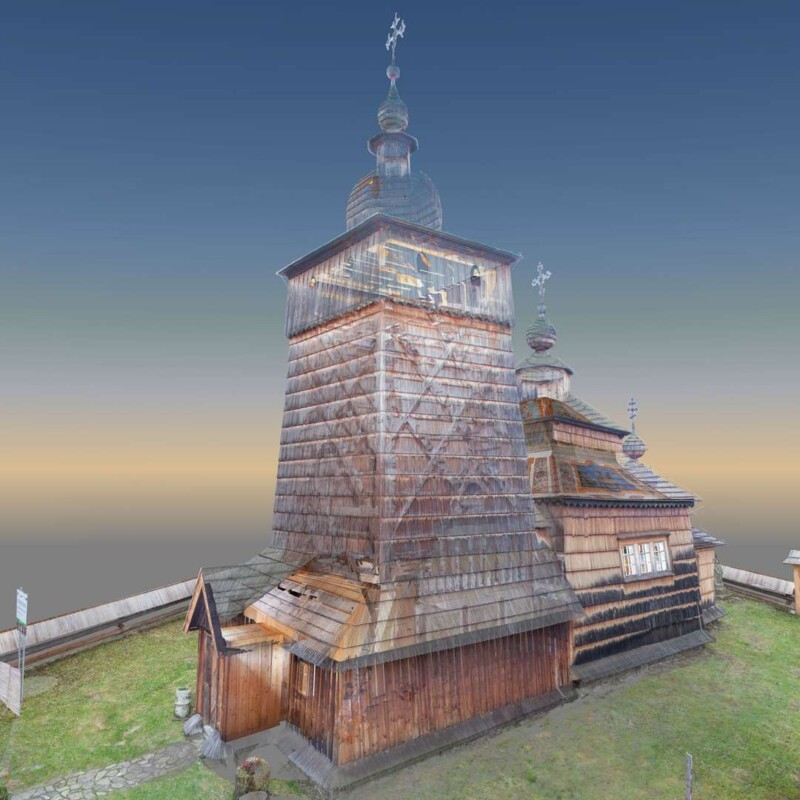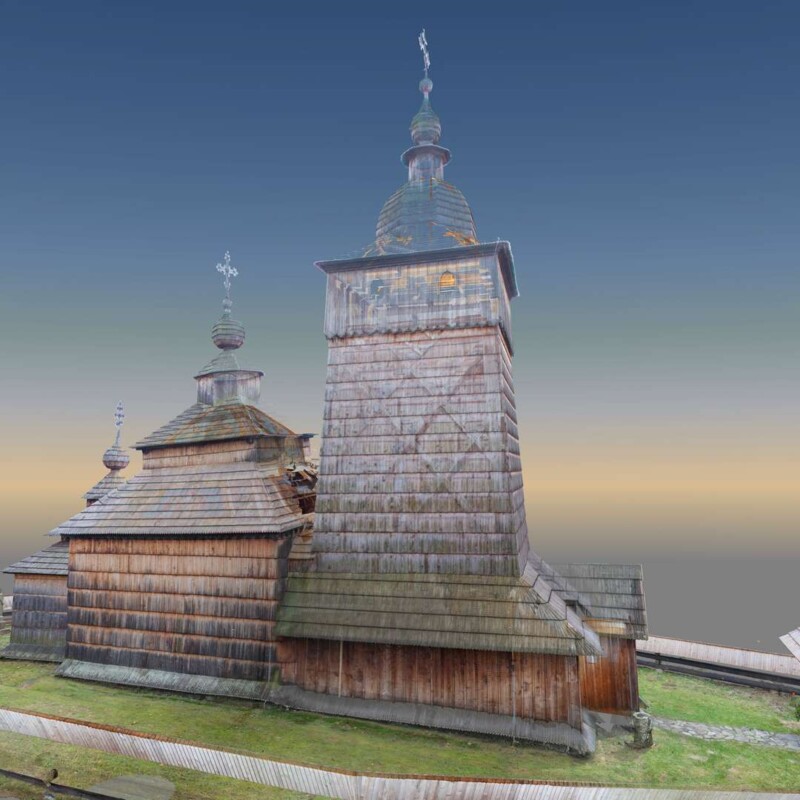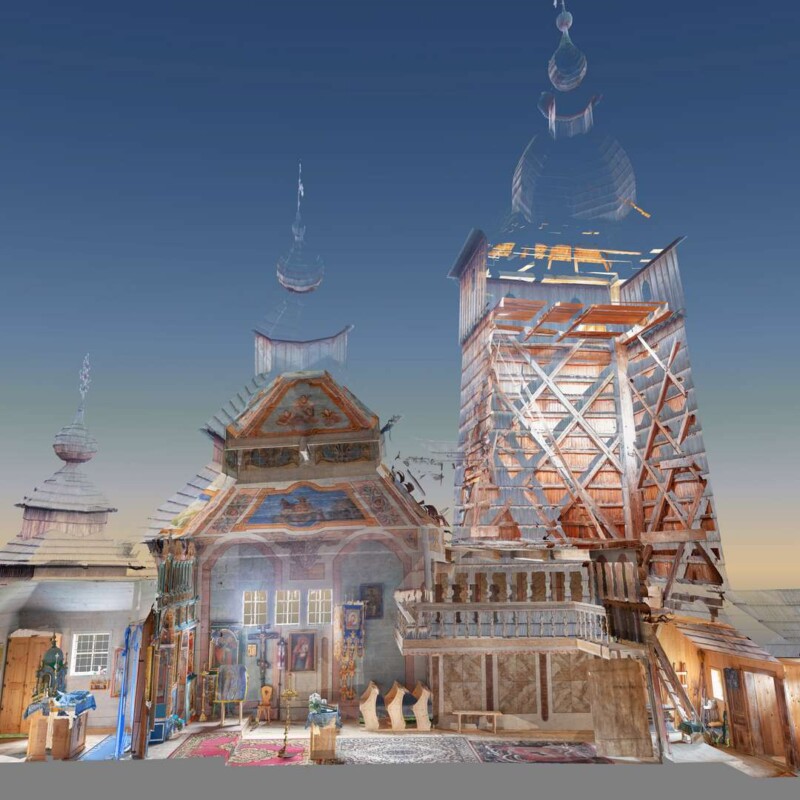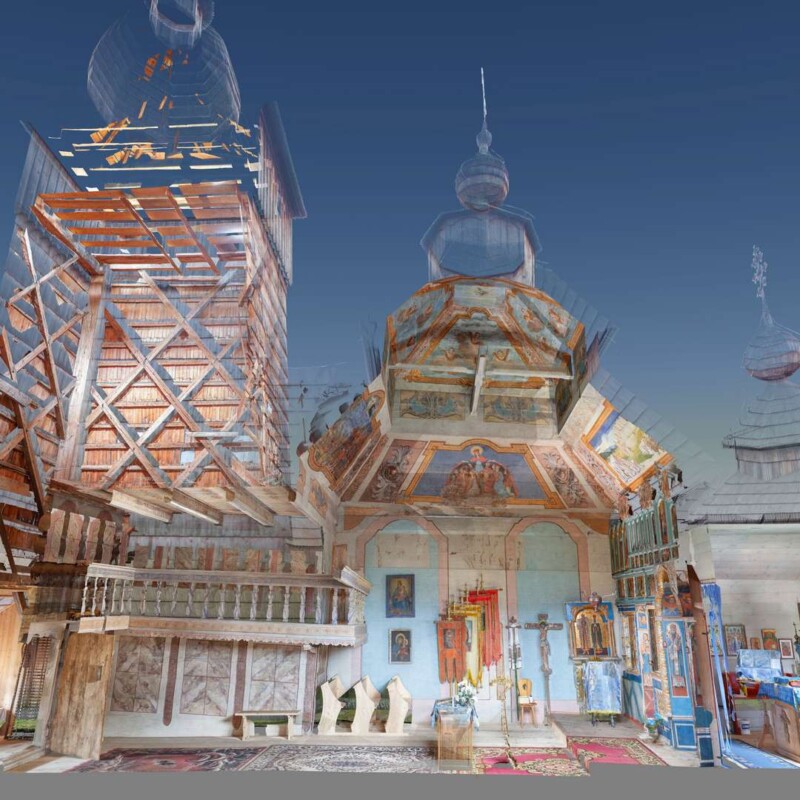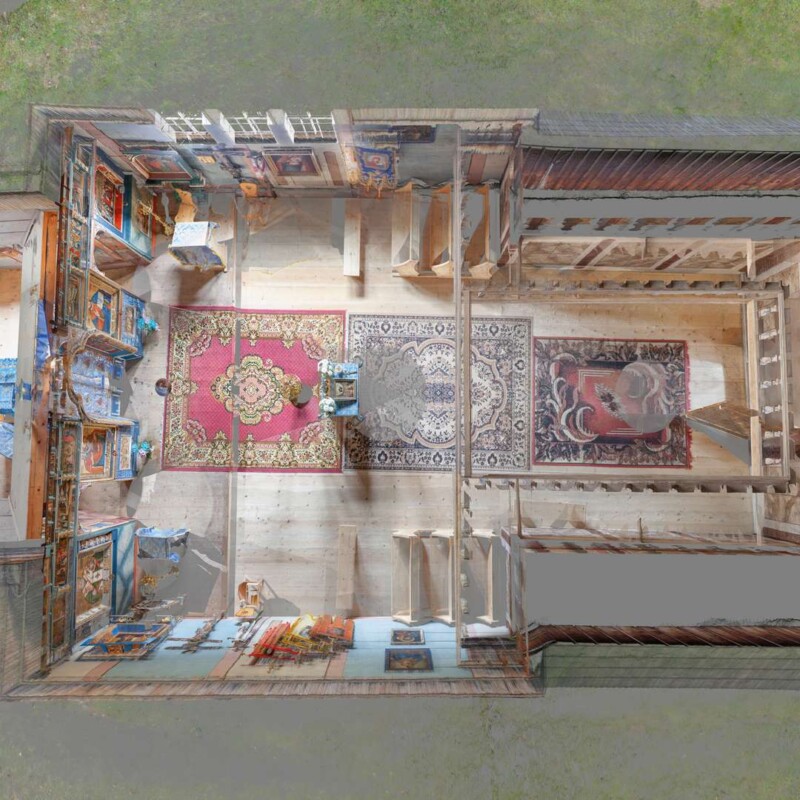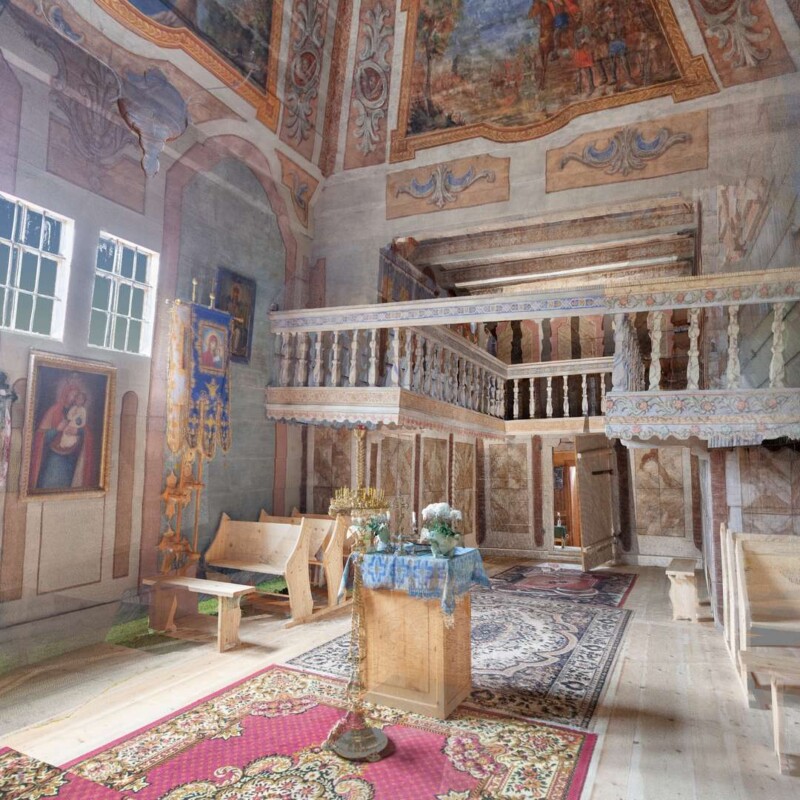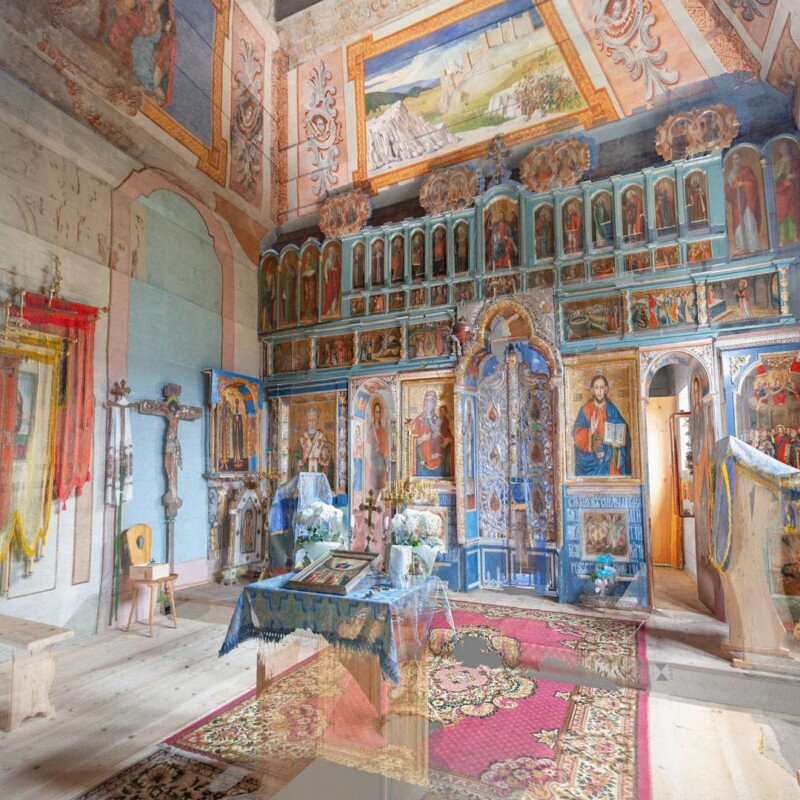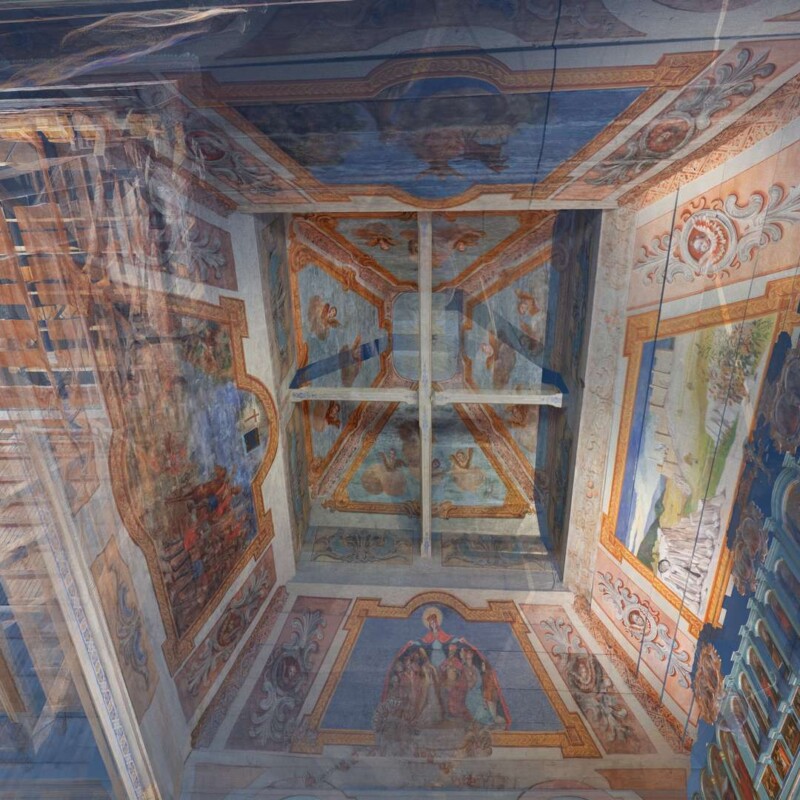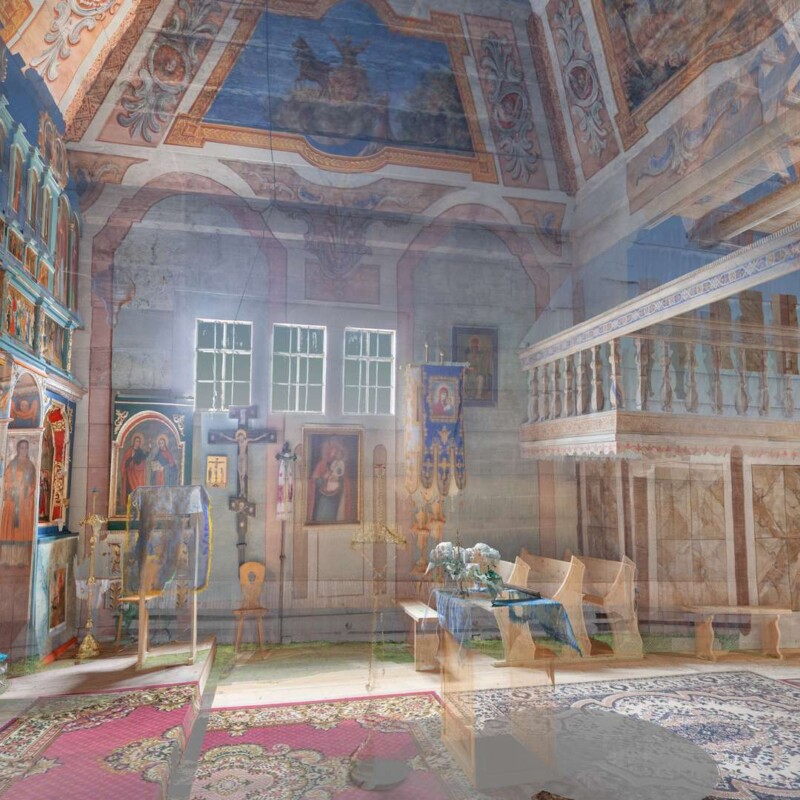Orthodox church of the Protection of the Mother of God, Volovec
The filial Orthodox church of Our Lady of Protection is located in one of the oldest of Lemko villages … Wołowiec. Heading inside, in the vestibule, you’ll see a votive beam with an inscription. The language is Church Slavonic and it tells us the date the church was built … 1766. Mind you, there’s plenty to indicate that it’s even older. It was built in the Western Łemko style and it features mansard-type. pyramid-shaped roofs. The mansard-type roofs are staggered, meaning that, at a certain point, the roof finishes and a wall appears. Below that, the sloping surface of roofing begins again. The volume is divided into three sections … the chancel, the nave and the vestibule, with the tower rising above it. Each section has its own roof, crowned with an onion dome. The tower was built using a post-and-beam structure. The chancel, which is the section of the church for the clergy and liturgical service, ends in a simple wall. The porch features a flat, beamed ceiling.
In the nave and porch, fragments of nineteenth-century decorative and figurative polychromes have survived. The painting includes depictions of the figures of saints alongside decorative patterns. These days, the church is home to a full, late-eighteenth-century iconostasis. An iconostasis traditionally separates the chancel and altar from the nave of the church, which is where the congregation gathers. It’s a kind of solid screen that holds rows of icons
The church has experienced various vicissitudes. Almost the entire village switched to the Orthodox rite during a schism that occurred in 1927. The inhabitants then had to build a new place of worship and the Church of the Protection of Mary descended into ruins.
In 1947, the communist authorities launched what’s known as Operation Vistula, the forced resettlement of the Lemkos and other ethnic minorities from the south-east to the newly regained territories in the west of Poland. When that happened, the Orthodox church in Wołowiec was dismantled to be sold as building material … but … it was in such a dire state that no willing buyers were found. And so it survived … in fact, it even began to serve as a sheepfold.
In 1956, three years after Stalin’s death, the hard-line, Stalinist regime in Poland underwent a something of a thaw. In 1958, a handful of families returned to Wołowiec and began endeavouring to rebuild the church and protect it from further ravages. But it wasn’t until 1990 that the first general renovation work began … and after that, the church had to wait almost ten years for the next, which began in 2008 and ended in 2020.
Application – a virtual walk around the church
The church in Wołowiec was built of wood, It’s around fifteen metres tall, about thirteen metres long and nine metres wide. It consists of three sections. Each of them is covered by a separate roof. The roofs are all clad in shingles … in other words, small, thin, tapering pieces of wood that are laid out to overlap one another. All of the roofs are crowned with a modest onion dome. The highest dome soars over the porch. The one above the nave is middling in size and the lowest one is set over the chancel, and face east.
The tower soars upwards on the western tower. It has walls that slope slightly towards each other. The upper part ends in a cubical chamber known as a pięterek or izbica. Above that, there’s a dome-like cupola. The windows illuminating the interior of the church are rectangular. They’re set into the side walls of the nave in groups of three. Inside, one eye-catching feature is the choir loft on the western wall. Complete with carved balustrade, it stretches more or less halfway along the side walls. The balustrade itself is decorated with paintings of rows of red flowers and leaves.
The iconostasis is painted an intensive light blue. It is asymmetrical, with the section on the left housing more icons than the one on the right. It has a row of icons depicting scenes from Whit Sundays, which rarely feature on an iconostasis.
There are numerous fascinating paintings on the walls and ceiling. One of them presents the prophet Elijah being taken up into heaven. Elijah is depicted in a chariot harnessed to two horses, set against a blue background. The artist depicted the chariot on a cloud and the prophet with his arms flung wide open. Another painting portrays Joshua’s army crossing the River Jordan, with armed cavalry men and foot soldiers lining the riverbank.



